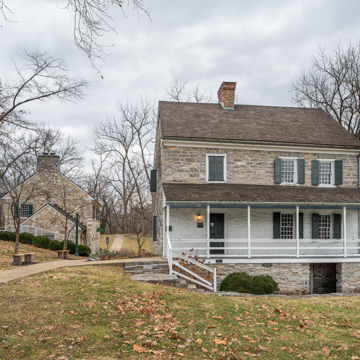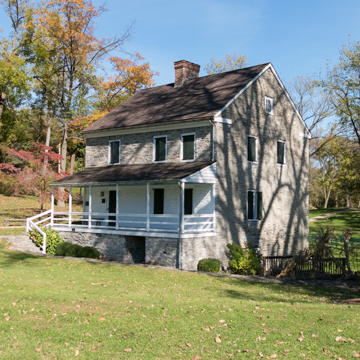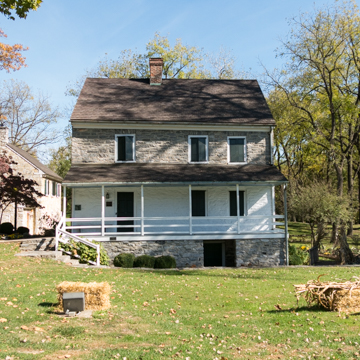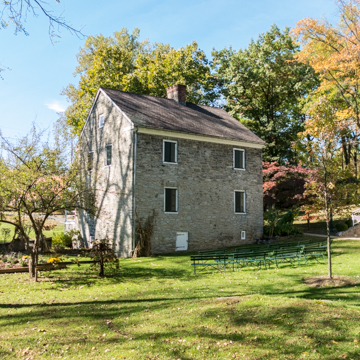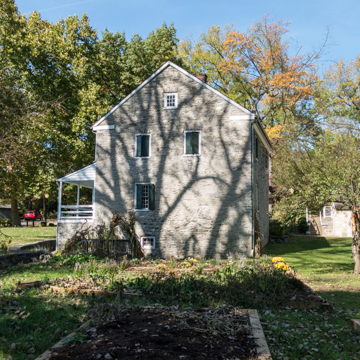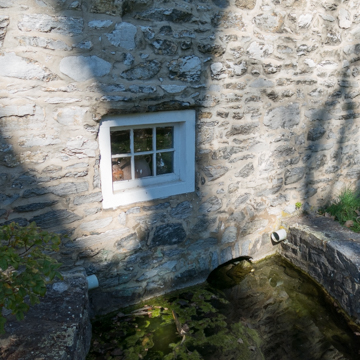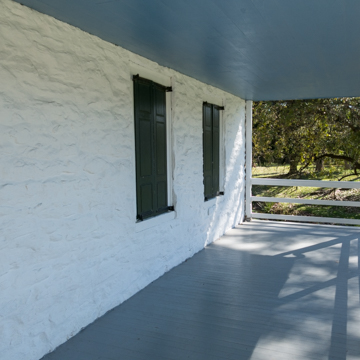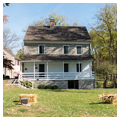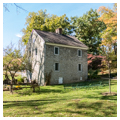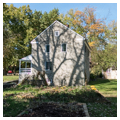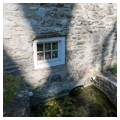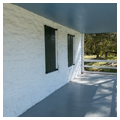The Hager House is built of random limestone in a traditional four-room, central-chimney German vernacular form referred to as a Flurkuchenhaus. Entrance was originally directly into the kitchen, or Kuche, with its large cooking fireplace and stair to the upper floors, behind which was originally a smaller storage room and to the other side are the larger Stube, or stove room used as a parlor, and a narrow rear Kammer, or master bedroom. Also typically German, the house is banked and set on a raised basement over a stream-fed spring to provide running water and cold food storage; and it features mud and straw insulation, original woodwork, paneled walls, and built-in cabinets.
The house is also significant as the home of the town’s founder, John Hager, a German immigrant who received a land grant in 1739. In 1762, he laid out a plan for the town that in 1776 became the seat of Washington County. A farmer, miller, and fur trader, Hager gave encouragement to other settlers by opening his house as a trading post. He sold the house in 1745 to Jacob Rohrer, who raised it to a full two stories. It was acquired by the Washington County Historical Society in 1944, restored, given to the City of Hagerstown in 1954, and opened to the public in 1962. A stone museum building housing artifacts discovered during archaeological investigations of the Hager House now sits to the rear.
References
Bergengren, Charles. “Pennsylvania German House Forms.” In Architecture and Landscape of the Pennsylvania Germans, 1720-1920 (Guidebook to the annual conference), edited by Nancy van Dolsen, 23-46. Harrisburg, PA: Vernacular Architecture Forum, 2004.
“Jonathan Hager House (Foundation),” Washington County, Maryland. Historic American Buildings Survey, National Park Service, U.S. Department of the Interior, 1953. From Prints and Photographs Division, Library of Congress (HABS No. MD-39).
Hill, Ann, and Pamela James, “Hager House” Washington County, Maryland. National Register of Historic Places Inventory–Nomination Form, 1973. National Park Service, U.S. Department of the Interior, Washington, D.C.
McMurry, Sally, and Nancy Van Dolsen, eds. Architecture and Landscape of the Pennsylvania Germans, 1720-1920. Philadelphia: University of Pennsylvania Press, 2011.















